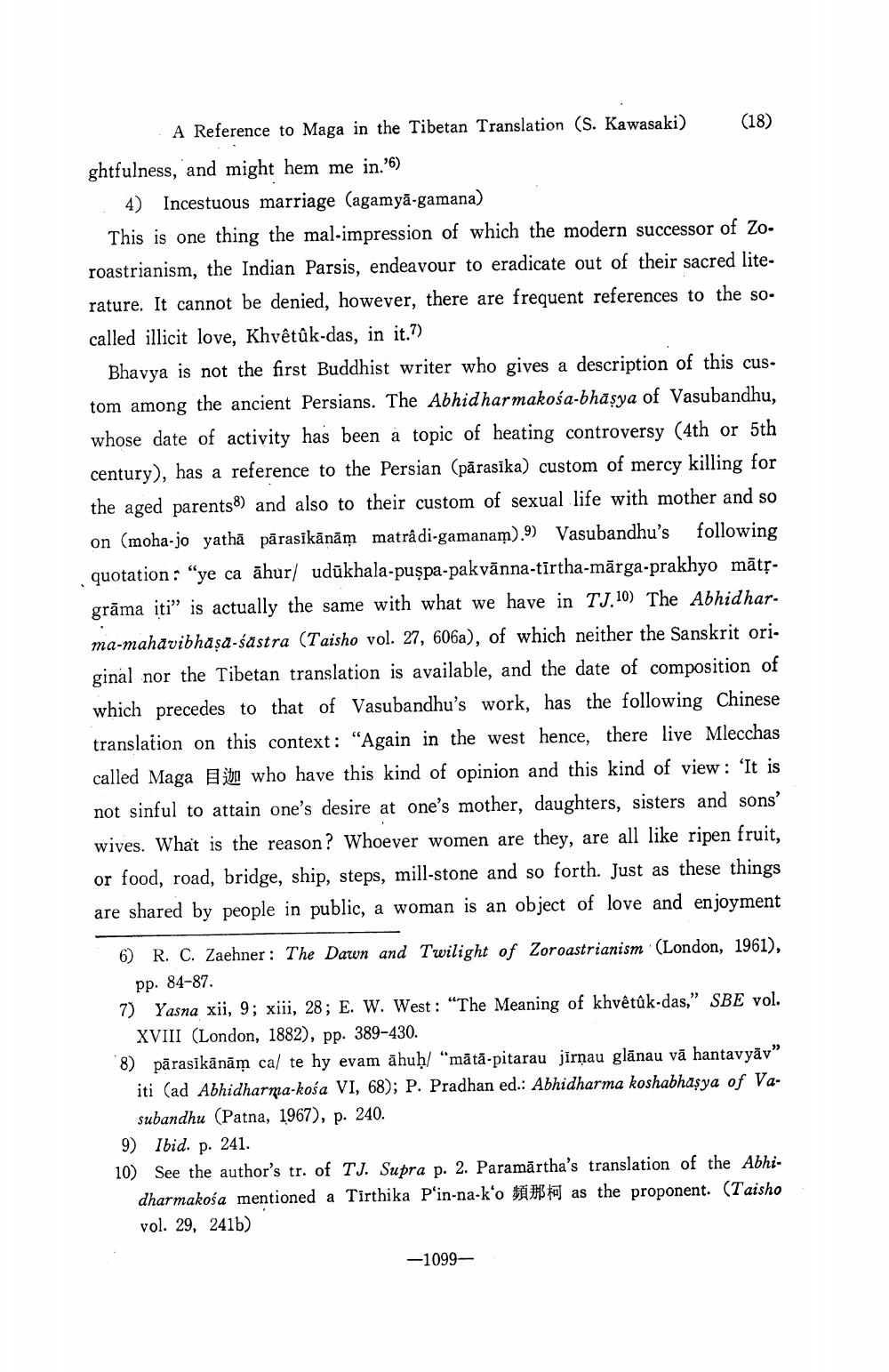Book Title: Reference To Maga In Tibetan Translation Of Tarkajvala Author(s): Shinjo Kawasaki Publisher: Shinjo Kawasaki View full book textPage 5
________________ A Reference to Maga in the Tibetan Translation (S. Kawasaki) (18) ghtfulness, and might hem me in.'6) 4) Incestuous marriage (agamyā-gamana) This is one thing the mal-impression of which the modern successor of Zo. roastrianism, the Indian Parsis, endeavour to eradicate out of their sacred literature. It cannot be denied, however, there are frequent references to the socalled illicit love, Khvêtûk-das, in it.?) Bhavya is not the first Buddhist writer who gives a description of this custom among the ancient Persians. The Abhidharmakośa-bhāsya of Vasubandhu, whose date of activity has been a topic of heating controversy (4th or 5th century), has a reference to the Persian (pārasika) custom of mercy killing for the aged parents8) and also to their custom of sexual life with mother and so on (moha-jo yathā pārasikānām matrâdi-gamanam).9) Vasubandhu's following quotation : "ye ca āhur) udūkhala-puşpa-pakvānna-tirtha-mārga-prakhyo māts. grāma iti” is actually the same with what we have in TJ.10) The Abhidharma-mahavibhașa-śastra (Taisho vol. 27, 606a), of which neither the Sanskrit original nor the Tibetan translation is available, and the date of composition of which precedes to that of Vasubandhu's work, has the following Chinese translation on this context: "Again in the west hence, there live Mlecchas called Maga Sibu who have this kind of opinion and this kind of view: 'It is not sinful to attain one's desire at one's mother, daughters, sisters and sons' wives. What is the reason? Whoever women are they, are all like ripen fruit, or food, road, bridge, ship, steps, mill-stone and so forth. Just as these things are shared by people in public, a woman is an object of love and enjoyment 6) R. C. Zaehner: The Dawn and Twilight of Zoroastrianism (London, 1961), pp. 84-87. 7) Yasna xii, 9; xiii, 28; E. W. West: “The Meaning of khvêtûk-das,” SBE vol. XVIII (London, 1882), pp. 389-430. 8) pārasikānām ca/ te hy evam āhuḥ "mātā-pitarau jirnau glānau vā hantavyāv” iti (ad Abhidharma-kośa VI, 68); P. Pradhan ed.: Abhidharma koshabhasya of Va. subandhu (Patna, 1967), p. 240. 9) Ibid. p. 241. 10) See the author's tr. of TJ. Supra p. 2. Paramārtha's translation of the Abhi dharmakośa mentioned a Tirthika P‘in-na-k'o #iw as the proponent. (Taisho vol. 29, 241b) -1099Page Navigation
1 ... 3 4 5 6 7 8
